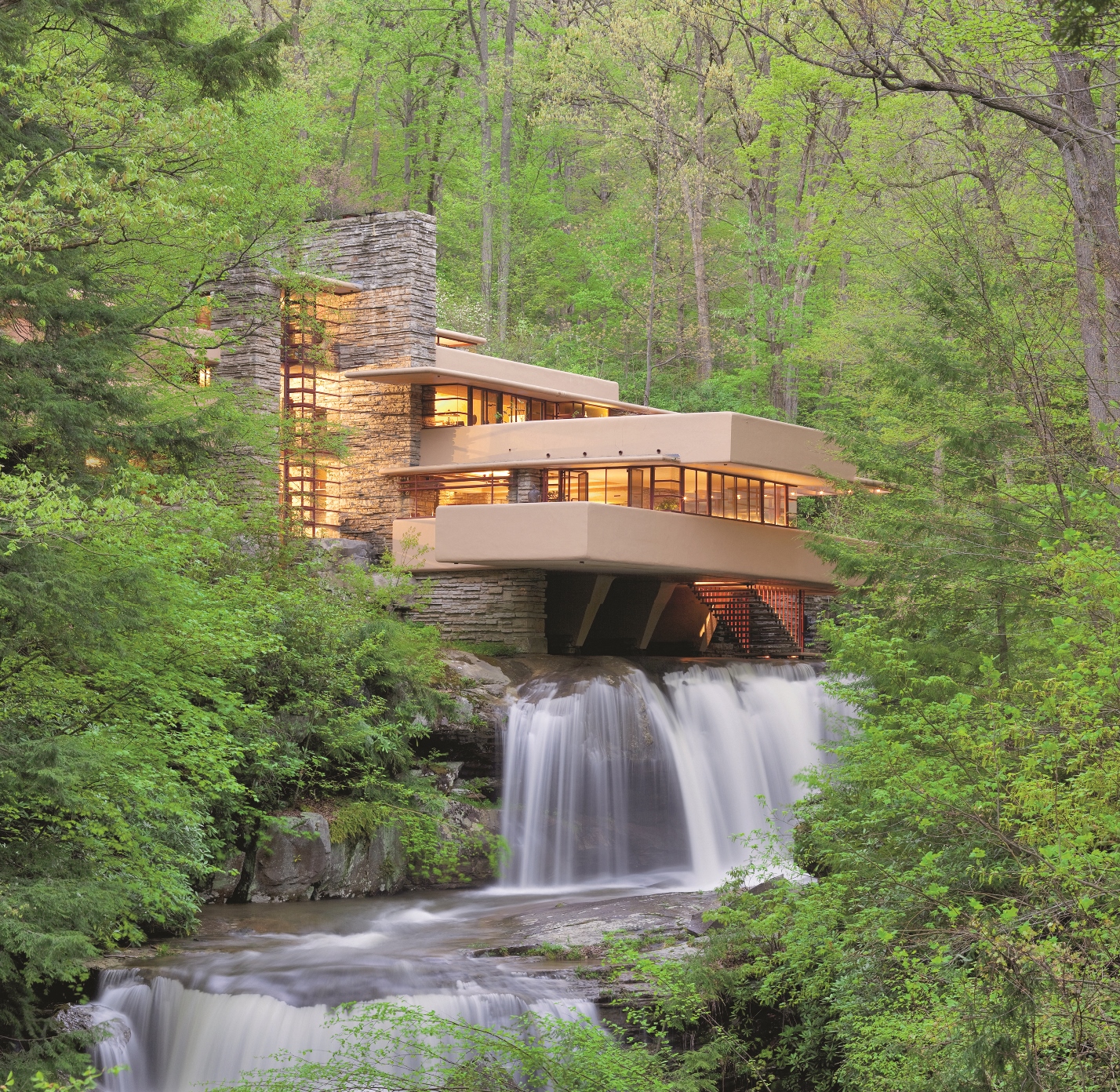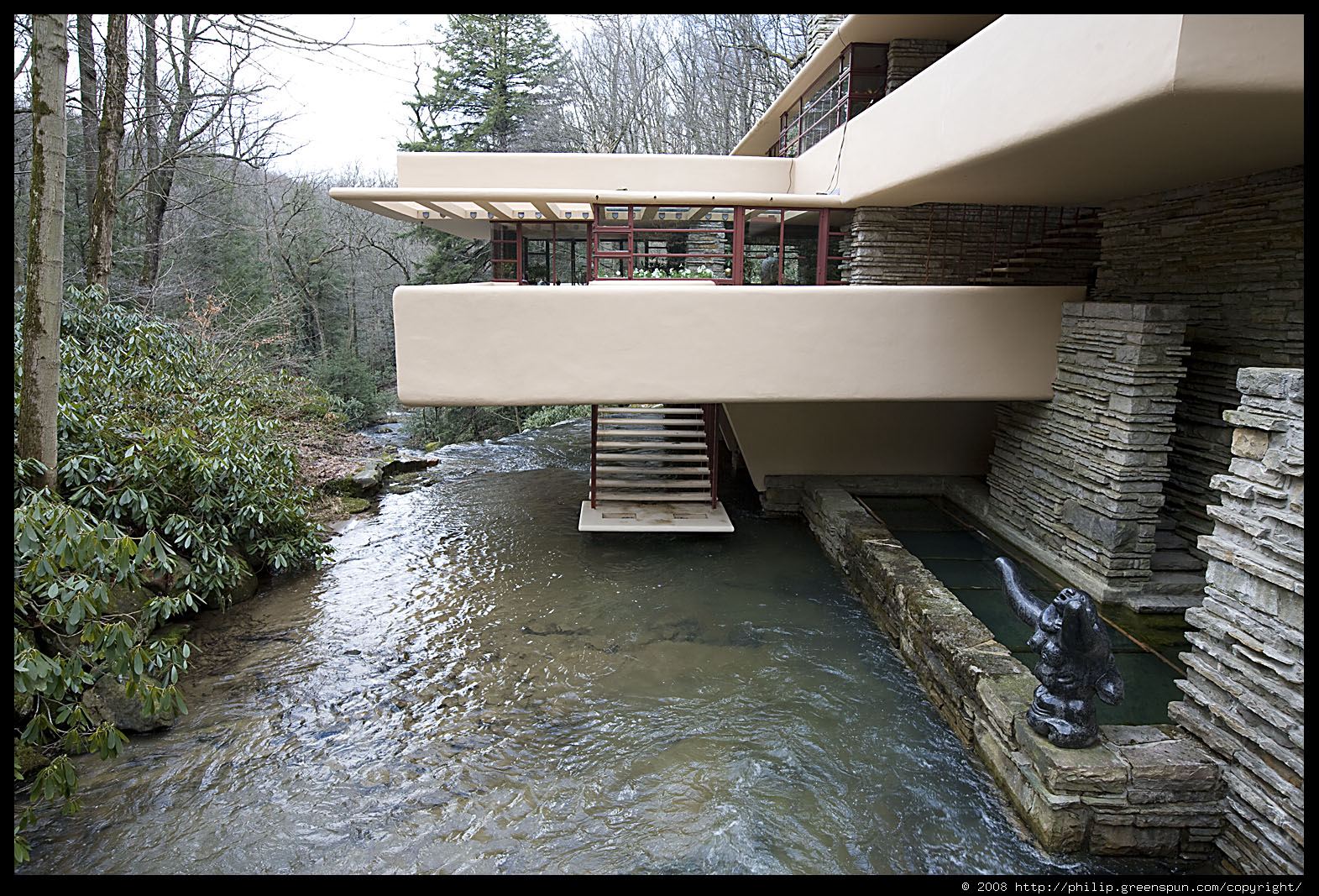Table Of Content

One of the world’s most famous houses is the weekend retreat called Fallingwater. Begun in 1936 and completed the following year, Wright designed the house for Pittsburgh department store owner Edgar J. Kaufmann, whose son, Edgar Jr., was a Taliesin fellow. Frank Lloyd Wright was known for designing a residence holistically, including built-in furnishings, lighting fixtures, and millwork, as well as sourcing and arranging furniture for his clients.
The History of Fallingwater
That is only the beginning of Frank Lloyd Wright making things just that little bit harder than necessary. Frank Lloyd Wright designed Fallingwater for Pittsburgh's Kaufmann family in 1935. This translates into a somewhat disjointed tour when you are there, as every room is packed in with a tour group of people. Each stop is well timed to shuffle guests around like a cog in a big machine.
Fallingwater News
Instead, Wright integrated the design of the house with the waterfall itself, placing it right on top of it to make it a part of the Kaufmanns' lives. Frank Lloyd Wright’s Fallingwater house is now museum and has never been listed for sale. However, when the home was constructed in 1935, it cost the Kaufmanns $148,000 to construct, and they paid Wright an additional $11,800 in architectural design fees.
Renovations to Fallingwater
Ultimately, Frank Lloyd Wright would die as one of the most influential Modernist architects of all time and a major figure in 20th century architecture in general. His work has inspired many despite the many rumors that have come to the forefront about what he was like to work with. His architectural career was one with many ups and downs, but by the time of his death, he had influenced a great many other architects around the world. One of the biggest influences on the design of the Fallingwater House was traditional Japanese architecture. There aren’t many people who get to own a waterfall, and so integrating it into their new house would be a great plan. However, their idea was that the waterfall would be incorporated into the view rather than situating the house over the waterfall.
Mummies of the World at the PPG Science Pavilion for a Limited Time

Situated in the Mill Run section of Stewart township, in the Laurel Highlands of southwest Pennsylvania, about 70 miles (110 km) southeast of Pittsburgh in the United States,[4] it is built partly over a waterfall on the Bear Run river. The house was designed to serve as a weekend retreat for Liliane and Edgar J. Kaufmann, the owner of Pittsburgh's Kaufmann's Department Store. The majority of the house’s structure is made of concrete, with exposed columns and beams forming porticos and the projections (the horizontal elements which extend as terraces over the waterfall) all made of concrete. Some walls and other vertical elements which define the spaces of the house, as well as the floors, were covered in the local stone.
A New York Architectural Gem Built by and for a Designer on Frank Lloyd Wright’s Iconic Fallingwater House - Mansion Global
A New York Architectural Gem Built by and for a Designer on Frank Lloyd Wright’s Iconic Fallingwater House.
Posted: Tue, 04 Jan 2022 08:00:00 GMT [source]
The floors act as tiers/layered, emphasizing the falling of water and integrating the building into the landscape even more. Vined plants were installed above cantilevering rooftops, to further integrate the exterior building with nature. Frank Lloyd Wright was not only considered an architect, but also an educator, writer, and designer. Wright was known for designing organic structures that were in harmony with nature, working with nature rather than against it. This design style was quite the contrast to the architectural movements of the time, such as modernism, although there are a few modernist characteristics in his work.

See hidden secrets of Frank Lloyd Wright’s famed Fallingwater house - TODAY
See hidden secrets of Frank Lloyd Wright’s famed Fallingwater house.
Posted: Fri, 22 Jan 2016 08:00:00 GMT [source]
Fallingwater staff have the authority to approach and verify the intent of photography to ensure compliance with the photography policy. Failure to adhere to these guidelines or staff direction may result in being asked to cease all photography or leave the premises. Wright at Polymath Park tour times vary throughout the season, so we invite you to explore individual tour options for availability.
Fallingwater’s construction site was originally a “summer camp” for Kaufmann’s employees.
According to some of his apprentices at the time, Frank Lloyd Wright did not have the plans ready ahead of time and designed them in a rush in about two hours. Apparently, he was completely ambivalent towards the fear and nervousness of his apprentices as he did this. However, this is an additional part of the design process that is not integral to the history of the building but does point further toward the difficulty of Frank Lloyd Wright. Ultimately, the family was not particularly happy about the design situating the house above the waterfall rather than it being part of their view. Fallingwater is located in the mountains of Southwestern Pennsylvania, also known as the Laurel Highlands, in Mill Run, Fayette County, which is about 70 miles southeast of Pittsburgh.
The design of the house is a clear example of naturalist architecture, as all the decisions taken in its construction were alongside the integration of the building with the countryside. It was intended that the work be converted into another natural element of the surroundings, in full harmony with it and with the passing of time. The building grows from inside out and extends according to the needs of its inhabitants. In this way, it can be modified, as in organic architecture the construction is conceived as a living thing and can alter its form. The Fallingwater house was and is a masterpiece of a residence, well ahead of its time.
As a result, the cantilevered front of the house started to drop as soon as the concrete was removed. Despite his difficult childhood, Wright had big ambitions and was set on becoming an architect, as his mother predicted. He went to study at the University of Wisconsin-Madison but ended up leaving the school before achieving his degree. Thirty years later, Wright merged with the Joseph Lyman Silsbee architectural firm in Chicago as a construction supervisor and accredited draftsman where he worked on the Unity Chapel for his family.
The steps of the “staircase of water” are suspended from traction cables, attached to the first slab. Sadly, you are not allowed to take any photos inside the house as it is prohibited for two proper reasons. Firstly, Fallingwater’s Frank Lloyd Wright gets more than 150,000 visitors every year. Therefore, if everyone started clicking pictures, then the interior of the house would get cramped.
The rooms were furnished by Wright himself and are very simple and minimalistic. The passageways in the house are very dark and narrow and they were purposely designed this way by Wright to further emphasize the expansion of the open-plan areas. Ceilings are also very low, some as low as seven feet, to draw the eye horizontally and towards the outside. Kaufmann acted against Wright’s specifications and had more reinforcement installed.
The house was built as a weekend home for owners Mr. Edgar Kaufmann, his wife, and their son, whom he developed a friendship with through their son who was studying at Wright's school, the Taliesin Fellowship. He clad them in local sandstone laid in horizontal striations, like the forms in its natural surroundings. To further the house’s connection to nature, Wright used flagstone flooring inside and out and employed large sheaths of glass windows for visual continuity. While this landform may have dictated—in Wright’s mind—the obvious building site, its massing and material palette were entirely his invention. The horizontal orientation of the home’s large terraces (which are enclosed by parapets) recalls two of Wright’s prior residential architecture explorations. The first is prairie-style architecture, which was inspired by the flatlands of the American Midwest, where Wright was born and raised.
The first phase of the below restorations is set to begin work in 2022, depending on whether the desired donation goals are met. There was said to be a dispute between Kauffman and wright, as Kauffman wanted to add more reinforcement to the concrete, but Wright refused, he even went as far as threatening to resign from the project. Because of the cantilevering system, the house appears to be floating above the stream. By the time Wright was commissioned for Fallingwater, he was already 67 years old with very few commissions, as his prime overlapped with the Great Depression.

No comments:
Post a Comment